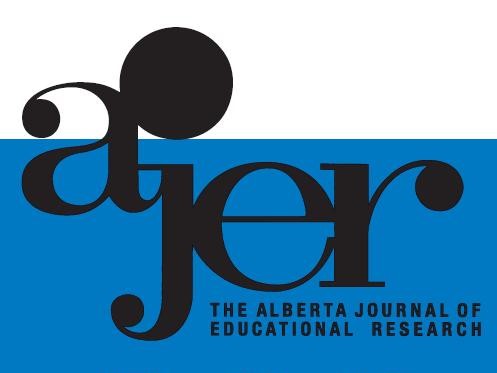Teaching with the Virus: Sociomaterial Assemblages and the Production of Schooling During COVID-19
DOI:
https://doi.org/10.55016/ojs/ajer.v69i4.73625Abstract
Using new materiality theory, we analyzed teachers’ and administrators’ descriptions of educational practices and everyday life in schools during the first year of the COVID-19 pandemic. During this time, the virus and the Provincial Health Authority were agential parts of classrooms that both restricted pedagogical possibilities, as well as created openings for something new to occur. As educators taught “with the virus,” pedagogy and curriculum unfolded rhizomatically shooting off in different and often unexpected directions. Our research makes visible how teaching is always a co-creative act of participating with the material, affective, and relational landscapes of practice.
Keywords: pedagogy; COVID-19; sociomaterial assemblages; new materiality; K–12 schooling
En utilisant la théorie de la nouvelle matérialité, nous avons analysé les descriptions faites par les enseignants et les administrateurs des pratiques éducatives et de la vie quotidienne dans les écoles au cours de la première année de la pandémie de COVID-19. Pendant cette période, le virus et l'autorité provinciale de santé ont fait partie intégrante des salles de classe, restreignant les possibilités pédagogiques tout en créant des ouvertures pour l’émergence de quelque chose de nouveau. Alors que les éducateurs enseignaient "avec le virus", la pédagogie et le programme scolaire se sont développés comme des rhizomes en prenant des directions différentes et souvent inattendues. Notre recherche met en évidence le fait que l'enseignement est toujours un acte cocréatif de participation avec les paysages matériels, affectifs et relationnels de la pratique.
Mots clés : pédagogie ; COVID-19 ; assemblages sociomatériels ; nouvelle matérialité ; scolarité M-12
Downloads
Downloads
Published
How to Cite
Issue
Section
License
UNIVERSITY OF ALBERTA COPYRIGHT LICENSE AND PUBLICATION AGREEMENT
If accepted, authors will be asked to sign a copyright agreement with the following points:
A. Where there is any inconsistency between this Copyright License and Publication Agreement and any other document or agreement in relation to the same subject matter, the terms of this Agreement shall govern.
B. This document sets out the rights you are granting in relation to publication of your article, book review, or research note entitled (the “Article”) through inclusion in the academic journal titled Alberta Journal of Educational Research (the “Journal”) published through the Faculty of Education, representing the Governors of the University of Alberta (the “Journal Editor”).
C. There will be no payment to you for this publication and grant of rights. In consideration of the agreement to publish the Article in the Journal:
1. You are warranting that:
- the content of the Article is your original work, and its content does not contain any material infringing the copyright of others; or, where the Article is not entirely your original work, you have obtained all necessary permissions in writing to grant the rights you are giving in this agreement;
- the content of the Article does not contain any material that is defamatory of, or violates the privacy rights of, or discloses the confidential information of, any other person;
- the Article has not been published elsewhere in whole or in part, and you will not allow publication of the Article elsewhere without the consent of the Journal Editor;
- the names of all co-authors and contributors to the Article are:
2. You agree to license the copyright in the Article to the Journal Editor, on a worldwide, perpetual, royalty free basis; and to the extent required by the terms of this agreement. You shall retain the right at all times to be acknowledged as the/an author of the Article.
3. You further agree that the Journal Editor has the entitlement to deal with the Article as the Journal Editor sees fit, and including in the following manner;
- The right to print, publish, market, communicate and distribute the Article and the Journal, in this and any subsequent editions, in all media (including electronic media), in all languages, and in all territories, ing the full term of copyright, and including any form of the Article separated from the Journal, such as in a database, abstract, offprint, translation or otherwise, and to authorize third parties to do so;
- The right to register copyright of the Journal;
- The right to edit the Article, to conform to editorial policy as the Journal Editor sees fit.
4. If any co-author or contributor to the Article does not sign this agreement, the Journal Editor reserves the right to refuse to publish the Article.



